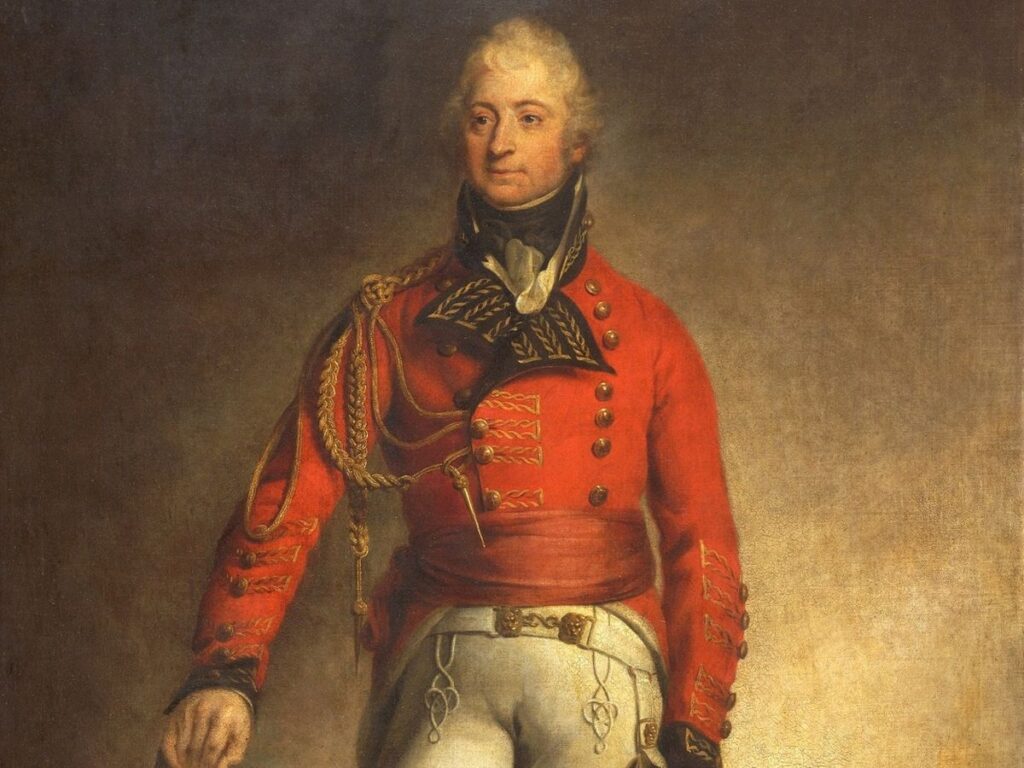
The Amgueddfa Cymru removed the portrait of Sir Thomas Picton from the galleries of the National Museum of Wales. This is in order to re-evaluate the heritage of the subject.
Thomas Picton is a renowned Welsh war hero. As governor of Trinidad, he was known for his brutal treatment of enslaved and indigenous peoples.
Thomas Picton’s portrait was removed from view as part of a youth initiative called Reframing Picton, sponsored by Amgueddfa Cymru and carried out in collaboration with a community partner, the Sub-Saharan Advisory Group (SSAP). The painting, which has been on display for a century, will remain in custody, and two Trinidadian-born artists have been tasked with “reimagining” Picton’s life and legacy in the Caribbean, the museum said in a press release.
Trinidad and Tobagonian multidisciplinary artists Heise and Lacu Neg, a British collective of Trinidadian heritage artists that shares the stories of the African diaspora through art, will collaborate to create new monuments that, once completed, will be included in the National Collection for Wales.
Kat Davis, Director of Collections and Research at Amgueddfa Cymru, said this is another important step for Amgueddfa Cymru in exploring national collections and thinking about who they show at the Faces of Wales and why. This project replaces one piece of art that attaches great importance to one whose actions as governor of Trinidad, even at that time, were considered brutal, with a festive portrait of a worker whom we can consider a hero today.
The Lieutenant-General was once hailed as a hero for his actions at the Battle of Waterloo and is known for his violence against the people of Trinidad during his rule of the island from 1797-1803. Research into Thomas Picton’s monuments has intensified following the Black Lives Matter protests in the summer of 2020, and the Cardiff council previously voted to remove a marble statue of him from their Hall of Heroes at City Hall.
While orders are being placed, the painting William Lloyd, Hedger, and Diecher (1937) by the Dutch-born British artist Albert Houswesen will take the place of Picton’s portrait. Like most of Hausuesen’s work, the painting is a large-scale portrait of a young working-class Welshman who was probably digging ditches in coal mines
In a statement, Fadhili Magia, Director of SSAP, said: “As we strive to build a Wales that is inclusive, inclusive, and focused on community cohesion and recognition of the different cultures that exist in our country, we need to honor those who represent society. in which we live. These people should be featured in the Faces of Wales gallery. “

Thomas Picton, also known as the tyrant of Trinidad or the bloody governor, is a controversial figure. Historically, he has been hailed as a public “hero”, but his rule of Trinidad and his treatment of slaves set him apart as a particularly brutal leader.
Picton’s reputation was based on his martial prowess. Thomas Picton, like many others, profited directly from the slave trade. Moreover, he was known for his ruthless treatment of slaves and other people as the first British governor of Trinidad.
In 1803, he stood trial in London for sanctioning the torture of Louise Calderon, at large a 14-year-old mulatto girl accused of theft. Louise was hung by her wrist from a scaffold for nearly an hour, with her entire weight supported on an inverted wooden peg – an excruciating form of torture known as picketing. During his trial, Thomas Picton was also investigated for torturing, beheading, and burning living slaves accused of witchcraft, witchcraft, and necromancy. His small military force used hanging and mutilation as a way to maintain control.
He was found guilty, but the sentence was later overturned, and Thomas Picton argued that Trinidad was under Spanish law at the time that allowed torture.
This full-length portrait of Thomas Picton in military uniform, by Martin Archer Shea, was donated to the National Museum for Wales in its founding year, 1907. This is one of the first groups of paintings to enter the museum’s collection. The portrait is believed to have been exhibited at the Royal Academy in 1816, a year after Picton’s death.
























